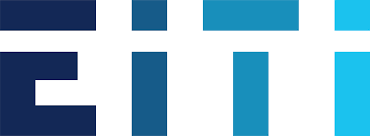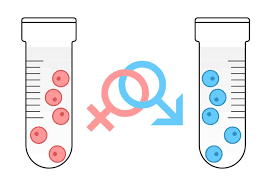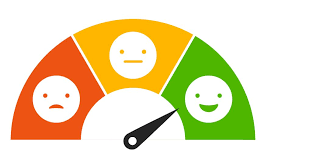Want help to write your Essay or Assignments? Click here
Abstract
This report therefore seeks to examine the role of the civil society in ensuring a qualitative EITI report. This can be seen in the manner in which revenues generated from the minerals and oil is in this case utilized in the transformation of different economies with the aim of reducing poverty and raising the standards of living for different population in resource-rich nations.
The Role of Civil Society in Ensuring a Qualitative EITI Report
Introduction
The purpose of this report is to establish the involvement of the civil society in determining an EITI qualitative reporting. The paper will critically establish the functions of the civil society the process of EITI qualitative reporting. It is vital to consider that states that incorporate the element of EITI make a commitment to strengthen the aspect of transparency in the revenues generated from its natural resource revenues. The citizens of these states are also accorded the responsibility of holding the state and the government accountable on how these resources are dispensed (Disclosure as Governance 2010). This aids in the building of prosperous and stable societies that function in an effective manner in the global economy.
On the other hand, much of ETI’s development is owed to the civil society. This clearly depicts the fact that without the existence of the civil society, ETI would not be functional. This is attributed to the fact that the civil society makes concerted advocacy approaches that sees the extractive companies publish their payments to the host governments. Consequently, close to 400 civil society organizations have been committed to the participation of governance through the implementation of ETI in resource rich states around the globe (Sovacool, & Andrews, 2015).
ETI in this case incorporates and approach of governance that advances the element of revenue transparency within the mining, gas, and oil sector through an approach that stresses the need of multi-stakeholder approach with integrated roles of the civil society, the governments and extractive companies (Topal, & Toledano, 2013). Thus the key elements of the success of this approach lies in the ability of developing dialogue that fosters the collaboration between different players in the development, monitoring and evaluation of EITI process. The engagement and functions of the civil society occurs in its approach aimed at overseeing the implementation of EITI in countries and within the international EITI board (Lehrer, & Delaunay, 2009).
EITI Background
In 2002, at the World Summit for Sustainable Development, United Kingdom’s Prime Minister Tony Blair launched the EITI process as the future global transparency standard. As a coalition of different stakeholders came together, expectations were heightened towards believing that through governance and accountability, nations, companies and other players in the economy would improve their share of revenues being spent on economic growth and poverty reduction.
In this case, the process of EITI has been promoted in international development agendas as an instrument that will finitely establish and develop the resource-rich countries to reap the benefits of their resource endowments, a factor that has exhibited excessive expectations about the impact it could have. The G8 has critically emphasised its support for the EITI process, by initiating effective approaches aimed at improving its transparency, accountability, and good governance and thereby leading to sustainable economic growth in the extractive sector.
The EITI Principles
According to Aaronson (2011), the EITI principles were first initiated in conferences that were held in London in 2003. During these conferences, several states, investors and civil society organizations reaches a consensus on the principles that were required in order to establish transparency over the payments of revenues in the extractive sector (Murphy, 2012).
The EITI aspect holds on the belief that prudence should be a key aspect in the use of natural resources for the development of a sustainable economy and development that would in turn impact poverty reduction approaches (Aaronson, 2011). If the proponents of EITI are not fairly management, this would result in a negative economic and social impact.
EITI on the other hand acknowledge the initiatives directed towards managing wealth that is gained from natural resources with the aim of benefiting the citizens of a state within the domains of sovereign governments, a factor that needs to be initiated within the interests of a national state (Sovacool & Andrews, 2015). EITI also takes into consideration the benefit accrued from the extraction of mineral resources, occurring over a revenue stream for a period of time, a factor that depicts the high dependency on the prices (Aaronson, 2011).
Benefits for Local Communities and Civil Society Organisations
The local community is considered to be the single most beneficiary of the benefits that arise from the increases in revenues. This can be viewed in the efforts that have been developed to ensure resource accountability through good governance, and justice, with the aim of mitigating the element of corruption are promoted and reinforced (Aaronson, 2011). The civil society organizations are also considered as part of the beneficiaries of these efforts as seen in the improved relations developed to influence governments and companies in the process. This can be viewed in their efforts directed towards:
- Increasing the opportunities aimed at building and strengthening different networks with the international organizations and investors.
- Strengthening public institutions.
- Enhancing governance and citizens who are aware of the empowerment.
The climate of transparency is one that ensures the civil society groups are empowered. An instance of this can be viewed in the implementation of EITI that facilitates the public participation in governance and improves the access to information for civil societies. The local community is aimed at profiting from the increases in revenues. The element of justice, accountability, good governance are promoted and reinforced with the aim of mitigating corrupt practices during the process (Aaronson, 2011).
The Role of Civil Society in EITI Reporting
As argued, the solid involvement and participation of the civil society is considered as essential since it has the capacity to better implement and a reinforce the initiation of a high quality EITI reporting approach. Participation of the civil society needs to be observed in the delivery of EITI results that go beyond the principles of dialogue and the dissemination of reports (PR, 2013). Engagement of the civil society’s in ensuring a qualitative EITI report occurs at different levels that include: the international EITI Boards and the states that implement the EITI process as part of the multi-stakeholder groups that have the capacity to oversee the EITI (Holden, & Jacobson, 2007).
The civil society as attributed in the process has the powers and initiative to discuss and establish the genuineness of the aspects of revenue transparency and increasingly contribute their experiences and expertise in fostering dialogues with different stakeholders. In some states, the civil society groups are considered to be in the forefront in popularizing EITI. In other regions, the civil society works in supporting legislative processes that are directed towards the strengthening and advancing of the states the agendas on resource and revenue transparency (Holden, & Jacobson, 2007).
This clearly depicts that the role of the civil society has the capacity to monitor and engage in the implementation of national dialogue in addressing some of the issues that are not covered directly by EITI such as the use of revenues that are accrued from the extractive sector.
Experiences that emerge from the implementation of EITI clearly shows that the civil society groups are bound to face several challenges within a state’s level that include the lack of capacity constraints, the lack of resources and other security issues (Pal, & Pantaleo, 2008). EITI Board has a functionally developed range of policy responses that are determined in the strengthening of the EITI requirements aimed at ensuring the civil society groups are fully interdependent and are provided with the opportunity to get engaged within the stages of EITI process.
Within the context of governance and development, the civil society is considered as a third sector that is distinct from the business and government that are functioning as an intermediary institution in ensuring that the issues that deal with the interests of the public within the public domain are coordinated through advocacy (Pal, & Pantaleo, 2008). The goal of this is to ensure these issues are addressed and effectively implemented in order to serve the common interest and good of the society
The non-governmental organizations through their involvement and activities, strong beliefs and principled positions voice out their views and positions to the sectors of the society through an approach that promotes discussions, debates, and constructive engagements. These roles are developed to enrich the public’s participation in the decision-making process thus strengthening good governance, accountability and democratic principles (Frynas, 2010).
These reasons therefore determine the manner in which the concepts of EITI are developed and built through an approach that engages a multi-stakeholder approach. This approach involves several key players such as the government, the civil society and other companies who play different roles in the EITI process. The civil society plays an integral role in reforming the EITI process even in situations where these roles are unclear in several implementing countries. The roles of the civil society would also include:
Identification
The civil society organizations beside the aspect of dialogue also share the view that it is their responsibility to identify the key issues that are within the interest of the public and that relate to the mandate of the EITI process that are directed towards extractive revenue transparency, the process of governance and ensure that the identified issues are addressed and brought within the public domain for debate and dialogue (Calland, & Bentley, 2013). Some of the issues that the civil society organizations clearly focus on include the process of leasing, oil block allocations, bidding rounds, the issuance of mining licenses, physical, financial and process management, the environmental standards and so on.
Agenda Setting
The civil society is different states consider the aspect of agenda setting as their traditional responsibility and a primary tool of their engagement (Calland, & Bentley, 2013). Under these roles, the civil society organizations identify some of the issues that are related to the EITI mandate and use these issues to set national and international agendas for the publics discourse, debate and engagement with the governments and the extractive revenue companies with the aim of improving the aspect of governance through a transparent process and accountability that is done through the use of EITI frameworks.
Public Education and Enlightenment
The element of public education and enlightenment in this case is another role of the civil society even though individuals tend to think these needs to be left for the media alone (Shenton, & Hay-Gibson, 2009).
Agents of Social Mobilization and Change
The civil society organizations also makes use of the fact that for the process of EITI to secure the public’s interests required within the sector, there is a need of providing a supporting role-that of acting as the agents of social mobilization and change (Mejía Acosta, 2013). In this case, it is essential to consider that these roles include the sustained mobilization of the opinions of the public with the aim of advancing the course of the EITI process within the areas of legislative processes and policy formulations. These are known and have been considered to come in the form of peaceful protests, resource mechanization and petitions.
Monitoring and Oversight
It is additionally essential to consider that the civil society organizations are also tasked with the responsibility of monitoring the processes and programs of EITI including the policies and the unfolding events within the extractive sector and ensure that accurate reports and facts are provided with the view of directing the appropriate course of action that can improve the process of governance (Mejía Acosta, 2014). The monitoring and oversight in this case needs to be community based and people driven, In order to carry out these functions in an effective manner (Caspary, 2012).
Advisory
Advisory in this case gives the position of the civil society organizations as some of the professionals within this field that offer fair, profound, qualitative and constructive advice to the EITI processes and in the implementation of an effective EITI process (Mejía Acosta, 2014). The EITI Board in this case needs to be open to advices within the areas of their operations and publicly acknowledge the contribution of the civil society within the EITI process.
Whistle Blowing
The civil society remains in a better position to blow the whistle in the event that extractive revenue transparency functions of the EITI process are not clearly following their mandates. This would therefore see the civil society active is in the exposition of fraudulent practices, process lapses, bribery, corruption, and dishonest dealings with individuals at any stage within the EITI process (Magner, 2015). The functions of whistle blowing as conducted by the civil society may also be used to attract and draw the attention of the areas that have achieved poor performance and that have been neglected and the failures in the rise of statutory responsibilities (Mejía Acosta, 2014).
Observation
The civil society has the mandate of taking up the roles of being the observers within certain activities in the EITI process in consultation with the Board and the secretariat. These roles also include the formulation of procurement processes for some of the projects, budget preparations, the development of annual work-plans, and meetings held with the public in situations that are advisable (Eigen, 2013). In performing these roles, civil society organizations are considered to have the right to engage in independent reporting of these events and give EITI Board the opportunity to make their final comments on these reports before they are disseminated.
Feedback
The role of the civil society in providing feedback in this case is considered as essential and desirable within the processes of EITI (Mouan, 2010). Many of the civil society organizations in this case draw from professional groupings, coalitions, and clusters and take up the full charge and role of providing adequate feedback to their states through a process that extends to the larger publics interests with the aim of addressing the issues of interests.
Want help to write your Essay or Assignments? Click here
Examples of Restricted Civil Society Group Cases
It is essential to establish that there are a number of examples that depict the restrictions of the civil society in the process of EITI. In one of the illustrations, the government of Congo can be viewed in the detention and trial of two Publishers Brice Mackosso and Christian Mounzeo who tried to publish the state of the nation as opposed to the governments view.
In other countries such as Equatorial Guinea that believe in the authoritarian style of leadership, the situation is conceived to be worse. In Guinea, the President then-Teodoro Obiang Nguema and his government have overtime been criticised by NGOs and other civil society organizations for placing restrictions on the basic civil and political rights, such as freedom of expression.
This therefore determines the fact that the space civil society involvement through activism on issues corruption and transparency remains non-existent as viewed in this states (PWYP, 2006). However, it is essential to determine that a government only has the capacity and power to restrict supporters who contend for transparency in a more discreet way.
For instance, this can be seen in the case of Nigeria where Nuhu Ribadu, who was considered as the head of t Economic and Financial Crimes Commission (EFCC) then was forced to resign and requested to attend a one year course in policy studies in consideration of the fact that the EFCC had come too close to top policy layers and had arrested several governors for corrupt practices (The Economist, 5 January 2008).
Civil Society is not Strong and Independent enough to take on the Responsibility that EITI Implies
In as much as the formal structure of the EITI process suggestively gives that governments responsibility for the implementation of the EITI process, much responsibility is put on civil society. Civil society in this case is given the power and autonomy to pressure the governments to join their initiatives. Civil society has the power to scrutinise and request for clear information of the figures presented in the EITI reports (in spite of the fact that most reports reveal very limited information), and to determine the manner in which the finances are utilized by the organisations extractive sector works, the payment types utilized, the relevant government receiving the payments and the accountability of these payments.
The list of the expectations from the civil society organizations remain long and for the countries in need of the EITI. In considering that the extractive sectors are, legally, technically and financially complex makes this approach difficult to achieve. In general, the EITI process requires an environment of justice and accountability in order to be implemented.
This therefore requires an environment where the civil society is empowered in knowledge and is considered as independent with the leaders within these organizations elected through a transparent approach that inclusively engages the democratic powers of the system. There is a need of ensuring that there are no conflict of interest that arises between the government, citizens, and the extractive industries.
The voices of the civil society organisations as viewed in this process can be alleged to affirm these organizations limitations within the EITI framework. Aaronson (2008) notes in several countries, the multi-stakeholder approach are an essential element that inhibits these organizations in the departure from the prevailing institutional and political norms. As a result of this, the civil society is incapacitated to effectively participate in the EITI process. In some states, the nongovernmental organisations (NGOs) are considered as autonomous since government officials are given the tasks of appointing the stakeholder groups rather than giving the citizens and NGOs opportunities to choose their representatives.
Discussion of Results
It is arguable that the civil society besides engaging in dialogue within the EITI process is also engaged in several other processes. An instance of this can be viewed in the implementation of EITI that facilitates the public participation in governance and improves the access to information for civil societies (Mouan, 2010). The local community in this case benefits from the increases in collected revenues that are channeled in projects, while of justice, accountability, and good governance on the part of the civil society are promoted and reinforced. The engagement of the civil society occurs in overseeing the implementation of EITI in countries and within the international EITI board (Walden, Jerome, & Miller, 2007).
Recommendation
Beside the aspect of dialogue, the civil society also shares the view that it is their responsibility to identify the key issues that are within the interest of the public and that relate to the mandate of the EITI process that are directed towards extractive revenue transparency, the process of governance and ensure that the identified issues are addressed and brought within the public domain for debate and dialogue (Frynas, 2010).
Within the context of governance and development, the civil society is considered as a third sector that is distinct from the business and government that are functioning as an intermediary institution in ensuring that the issues that deal with the interests of the public within the public domain are coordinated through advocacy.
Conclusion
In this reports, it is established that in 2002, at the World Summit for Sustainable Development, United Kingdom’s Prime Minister Tony Blair launched the EITI process as the future global transparency standard. As a coalition of different stakeholders came together, expectations were heightened towards believing that through governance and accountability, nations, companies and other players in the economy would improve their share of revenues being spent on economic growth and poverty reduction.
As determined in this report, the EITI in this case provides a governance approach that advances revenue transparency within the gas, mining, and oil sector through an approach that stresses the need of multi-stakeholder approach with integrated roles of the civil society, the governments and extractive companies.
The solid involvement and participation of the civil society leads the way in the implementation and a reinforcement of high quality EITI reports. This can be achieved when the civil society in this case has the capacity to discuss the aspects of revenue transparency and increasingly contribute their experiences and expertise in fostering dialogues with different stakeholders.
References
Aaronson, S. A. (2011). Limited partnership: Business, government, civil society, and the public in the Extractive Industries Transparency Initiative (EITI). Public Administration & Development, 31(1), 50-63. doi:10.1002/pad.588
Calland, R., & Bentley, K. (2013). The Impact and Effectiveness of Transparency and Accountability Initiatives: Freedom of Information. Development Policy Review, 31s69-s87. doi:10.1111/dpr.12020
Carbonnier, G., Brugger, F., & Krause, J. (2011). Global and Local Policy Responses to the Resource Trap. Global Governance, 17(2), 247-264.
Caspary, G. (2012). Practical Steps to Help Countries Overcome the Resource Curse: The Extractive Industries Transparency Initiative. Global Governance, 18(2), 171-184.
Disclosure as Governance: The Extractive Industries Transparency Initiative and Resource Management in the Developing World. (2010). Global Environmental Politics, 10(3), 53-73.
Eigen, P. (2013). International Corruption: Organized Civil Society for Better Global Governance. Social Research, 80(4), 1287-1308.
Frynas, J. (2010). Corporate Social Responsibility and Societal Governance: Lessons from Transparency in the Oil and Gas SeWhat is Globalization? Journal of Business Ethics, 93163-179. doi:10.1007/s10551-010-0559-1
Holden, W. N., & Jacobson, R. D. (2007). Mining amid armed conflict: nonferrous metals mining in the Philippines. Canadian Geographer, 51(4), 475-500. doi:10.1111/j.1541-0064.2007.00193.x
Koch, L. C., Niesz, T., & McCarthy, H. (2014). Understanding and Reporting Qualitative Research: An Analytical Review and Recommendations for Submitting Authors. Rehabilitation Counseling Bulletin, 57(3), 131-143.
Lehrer, M., & Delaunay, C. (2009). Multinational Enterprises and the Promotion of Civil Society: The Challenge for 21st Century Capitalism. California Management Review, 51(4), 126-147.
Magner, A. L. (2015). Drilling for Disclosure: Resource Extraction Issuer Disclosure and American Petroleum Institute v. SEC. Journal of Corporation Law, 40(2), 521-537.
Mejía Acosta, A. (2013). The Impact and Effectiveness of Accountability and Transparency Initiatives: The Governance of Natural Resources. Development Policy Review, 31s89-s105. doi:10.1111/dpr.12021
Mouan, L. C. (2010). Exploring the potential benefits of Asian participation in the Extractive Industries Transparency Initiative: The case of China. Business Strategy & the Environment (John Wiley & Sons, Inc), 19(6), 367-376. doi:10.1002/bse.687
Murphy, E. M. (2012). Disclosure of Payments by Resource Extraction Issuers. Federal Register, 77(177), 56365-56419.
Nurse, C. (2007). Transparency in resource extraction. Accountancy, 139(1366), 38-39.
Pal, N., & Pantaleo, D. C. (2008). From Strategy to Execution: Turning Accelerated Global Change into Opportunity. Berlin: Springer.
PR, N. (2013, August 29). Caracal Energy Inc. – Caracal Listed as a Supporting Company of the EITI. PR Newswire UK Disclose.
Salazar, K. (2012). Establishment of the U.S. Extractive Industries Transparency Initiative Advisory Committee and Request for Nominees. Federal Register, 77(145), 44263-44264.
Schuler, D. A. (2012). A club theory approach to voluntary social programs: Multinational companies and the extractive industries transparency initiative. Business & Politics, 14(3), 1-24. doi:10.1515/bap-2012-0024
Shenton, A. K., & Hay-Gibson, N. V. (2009). Dilemmas and further debates in qualitative method. Education for Information, 27(1), 21-37.
Sovacool, B. K., & Andrews, N. (2015). Does transparency matter? Evaluating the governance impacts of the Extractive Industries Transparency Initiative (EITI) in Azerbaijan and Liberia. Resources Policy, 45183-192. doi:10.1016/j.resourpol.2015.04.003
Topal, J., & Toledano, P. (2013). Why the Extractive Industry Should Support Mandatory Transparency: A Shared Value Approach. Business & Society Review (00453609), 118(3), 271-298. doi:10.1111/basr.12011
Walden, R. R., Jerome, R. N., & Miller, R. S. (2007). Utilizing case reports to build awareness of rare complications in critical care. Journal of the Medical Library Association, 95(1), 3-8.
Want help to write your Essay or Assignments? Click here



















